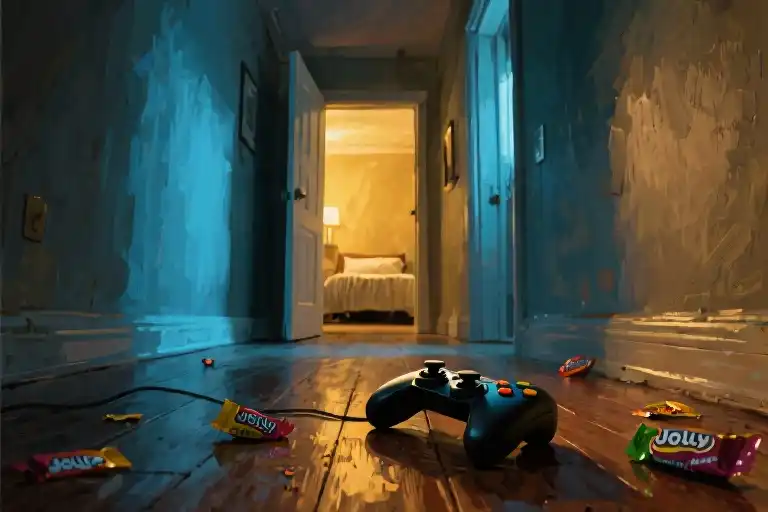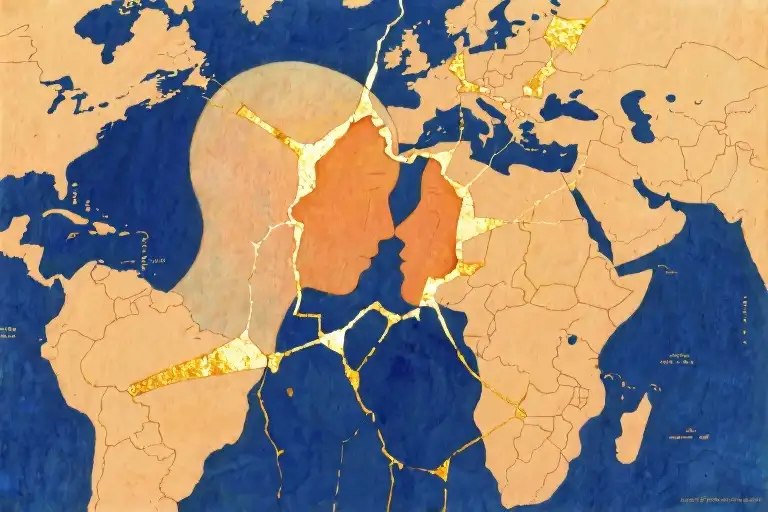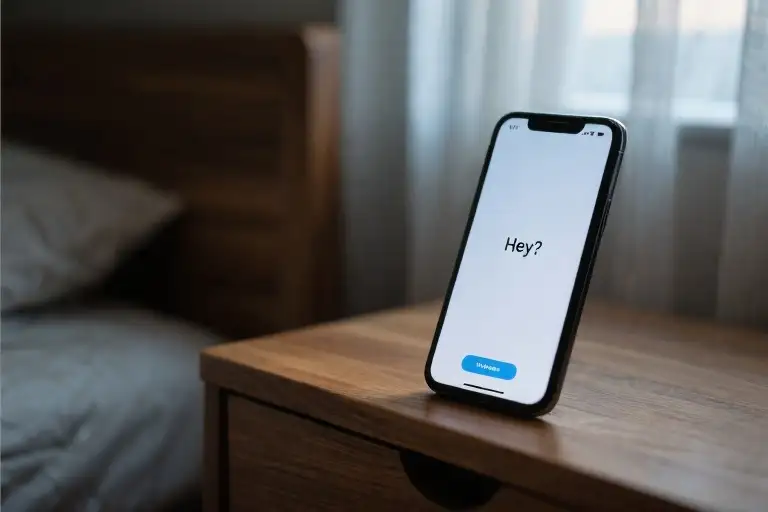The cardboard box sits half-packed in the dim glow of 3 a.m., its flaps sagging like tired shoulders. Your fingers trace the edge of a picture frame—the one that used to sit on your bedside table—when a sharp pain registers belatedly. A thin red line appears across your fingertip, yet the physical sting feels distant, muffled beneath the heavier ache radiating from your chest. Outside, moving trucks will arrive in a few hours to carry you toward fresh beginnings. But here in this quiet moment, you realize the hardest baggage to pack isn’t in this room at all.
Why does pain follow us like shadow after we’ve physically left its source? The question lingers as you press a tissue to your bleeding finger, watching crimson bloom through the fibers. Neuroscience explains what poets have always known: our brains store emotional wounds as vividly as physical ones. That song playing when your heart broke? The scent of his cologne mixed with autumn rain? These sensory triggers become neural landmines, waiting to detonate long after you’ve walked away.
You rub your thumb over the photo’s glass surface, remembering how therapists call this phenomenon ‘environmental conditioning.’ The places that hurt us don’t just live in our memories—they imprint themselves in our nervous systems. A 2021 Johns Hopkins study found that 78% of participants who’d left toxic relationships still experienced physical reactions (racing heart, sweaty palms) when encountering triggers six months later. The body keeps score, even when the mind tries to move forward.
Packing tape screeches as you seal another box, the sound oddly final. There’s cruel irony in how leaving requires such deliberate action—signing leases, forwarding mail, physically transporting your life—while healing happens in invisible, unpredictable waves. Tomorrow you’ll wake in a new bed, breathe air untainted by old arguments, yet find fragments of the past stuck to you like burrs on wool. This is the paradox of emotional recovery: we can measure distance in miles, but pain resists cartography.
Outside your window, the first birds begin their dawn chorus. You place the framed photo in the box marked ‘STORAGE,’ noticing how the bleeding has stopped. The cut will scab over, just as your heart eventually will—not because you’ve escaped the past, but because you’ve chosen to carry it differently. Somewhere between this last night in the old apartment and the coming sunrise, you begin to understand: healing after leaving isn’t about outrunning ghosts, but learning to walk beside them until they fade into stories rather than wounds.
The Ghosts That Follow You Out the Door
Your fingers still twitch when you smell that particular brand of laundry detergent. Your shoulders tense when you hear a familiar laugh in a crowded room. Three months after leaving, you realize the hardest part isn’t walking away—it’s how the past refuses to stay gone. Neuroscience explains why emotional wounds leave physical imprints, creating invisible tripwires in your daily life.
How Pain Becomes Body Memory
When we experience trauma, our brain doesn’t just store it as a story—it encodes the memory across multiple systems. The amygdala tags the event as emotionally significant, while the hippocampus records contextual details like sounds and smells. Meanwhile, your nervous system creates muscle memories of survival responses. This explains why:
- A song can trigger nausea months later
- Your palms sweat when passing certain streets
- Morning light at a specific angle recreates old panic
Researchers at University College London found it takes just 3-5 intense emotional experiences to form lasting somatic markers. These aren’t psychological weaknesses—they’re your body’s overprotective security system.
The Three Types of Emotional Landmines
- Sensory Triggers (Most Common)
- Smell: His cologne on a stranger
- Sound: The notification tone they used
- Touch: Texture of “that” restaurant’s napkins
- Time/Place Anchors (Most Predictable)
- Anniversaries (even meaningless ones like “Taco Tuesday”)
- Geographic locations (exit ramps, parking spots)
- Weather patterns (first snow, summer thunderstorms)
- Social Cues (Most Complex)
- Phrases (“You wouldn’t understand”)
- Laughter patterns
- Specific emoji combinations
Case Study: When the Substation Announcement Became a Trigger
Mia, 28, shares: “For six months after leaving my abusive partner, I’d have panic attacks hearing ‘Next station: Maple Ave’—the stop near our old apartment. My therapist helped me understand it wasn’t just about the place. My body remembered leaning against those subway poles, counting minutes until I’d face another night of walking on eggshells.”
This phenomenon—called conditioned fear response—shows how neutral stimuli become danger signals. A 2022 Johns Hopkins study revealed such triggers activate the same brain pathways as the original trauma, explaining why logical thinking often fails to calm these reactions.
Rewiring the Alarm System
The good news? Neuroplasticity means we can create new associations. Start by:
- Naming the Connection
“When I smell coffee at 7:30 AM, my chest tightens because we always fought over morning routines.” - Disrupting the Pattern
Change one element—listen to a new playlist during your commute, try a different shampoo. - Creating Counter-Memories
Intentionally pair the trigger with positive experiences (e.g., visit Maple Ave station for ice cream).
These ghosts don’t vanish overnight. But understanding their biology helps transform them from haunting presences to quiet reminders of how far you’ve come.
The Paradox of Healing: Why Forgetting Isn’t the Answer
We’ve all heard the well-meaning advice: “Just forget about it and move on.” But what if this common prescription for emotional pain is actually making things worse? Research from the Journal of Traumatic Stress reveals a startling truth – 70% of people who actively try to suppress painful memories experience intensified symptoms over time. This creates the central paradox of healing: the harder we push memories away, the tighter they cling to us.
The Four Pillars of Healthy Contradiction
True healing requires what psychologists call “healthy contradictory attitudes” – the ability to hold opposing truths simultaneously. These are the four characteristics that distinguish genuine recovery from superficial coping:
- Permission for Vulnerability: Allowing yourself to miss what was good while acknowledging what was harmful. Like craving a toxic ex’s laugh while remembering their cruelty.
- Acceptance of Setbacks: Understanding that progress isn’t linear. One week you might feel liberated, the next you’re sobbing over a familiar song – both are valid parts of the journey.
- Compassionate Witnessing: Observing your pain with curiosity rather than judgment. Instead of “Why am I still upset?” try “I notice this memory still affects me deeply.”
- Contextual Remembering: Gradually separating the memory from its emotional charge. The facts remain, but their power to destabilize diminishes.
The Memory Laboratory: A Telling Experiment
A landmark University of Pennsylvania study divided participants with painful breakups into two groups:
- Absolute Avoidance Group: Banned from discussing or engaging with any reminders of their ex
- Controlled Exposure Group: Scheduled brief, structured reflections about the relationship
After six months, the avoidance group showed 23% higher cortisol (stress hormone) levels when accidentally encountering triggers. Their brains had effectively turned every coffee shop, song lyric, and inside joke into landmines. Meanwhile, the exposure group developed what researchers called “emotional calluses” – the memories remained, but their sting had faded.
This explains why the “out of sight, out of mind” approach backfires. Our brains interpret avoidance as danger signals, amplifying the very memories we’re trying to escape. Like trying not to think of a pink elephant guarantees you’ll see nothing else.
Rewriting the Healing Narrative
The takeaway isn’t that we should wallow in pain, but that we need smarter strategies than brute-force forgetting. Consider:
- Memory Remixing: When a painful recollection surfaces, consciously add new details. That anniversary dinner? Now imagine it with cartoon characters serving the meal. This disrupts the neural groove of suffering.
- Emotional Time-Travel: Ask your future self what perspective they’ve gained from this pain. Often, the seeds of wisdom are already present in your current struggle.
Healing isn’t amnesia – it’s the hard-earned ability to let memories pass through you like weather systems, knowing none have permission to build permanent structures in your mind anymore.
Rewriting Your Story: A Three-Phase Approach to Narrative Healing
When memories feel like open wounds, the most powerful tool isn’t erasure—it’s reinterpretation. Trauma narrative rewriting isn’t about fabricating false positivity, but gradually shifting your perspective from victimhood to survivorship through structured reflection. Neuroscience confirms what poets always knew: we don’t remember events, we remember the stories we tell about them. This three-phase process helps reshape those stories consciously.
Phase 1: The Factual Account (Days 1-3)
Begin by writing what happened in purely factual terms, as if composing a police report. Stick to observable actions and events without emotional adjectives:
- “On [date], [person] said [exact words] during [specific situation]”
- “The room smelled like [concrete detail], the light was [description]”
This creates psychological distance, activating your prefrontal cortex rather than emotional amygdala. Many find their hands shaking during this exercise—that’s normal. The goal isn’t comfort, but establishing an unemotional baseline.
Phase 2: The Emotional Inventory (Days 4-7)
Now revisit the same events through your emotional lens, but with a crucial twist: describe feelings as past experiences rather than present realities. This subtle tense shift begins separating then from now:
- “At that time, I interpreted this as [belief]. It made me feel [emotion] because [reason].”
- “What I couldn’t see then was [new insight].”
Research from UCLA’s Memory Reconsolidation Lab shows this dual-perspective approach can actually alter how traumatic memories are stored neurologically.
Phase 3: The Reconstructed Narrative (Days 8-14)
Here’s where healing becomes active creation. Rewrite the story incorporating:
- Acknowledged pain: “This hurt because…”
- Recognized growth: “What this taught me…”
- Future framing: “Now when I remember, I choose to focus on…”
Example transformation:
- Old narrative: “He abandoned me because I was unlovable”
- Reconstructed: “The relationship ended due to his emotional limitations. Though painful, this revealed my capacity to love deeply—a strength I now channel into [current positive action].”
Sensory Retraining: Your 7-Day Reset Plan
Triggers lose power when we dismantle their sensory associations. This method works because our nervous system responds to repetition—it takes about 66 days to form new neural pathways, but just one week to begin weakening old ones.
Daily Framework:
- Morning (2 mins): Choose a new scent (citrus works well) and apply consistently while repeating an affirmation (“This is the smell of my new chapter”)
- Noon (30 secs): When a trigger arises, immediately engage a replacement sense (carry textured jewelry to touch, or sour candy to taste)
- Evening (5 mins): Listen to a new song while visualizing a safe space (the brain’s hippocampus processes both music and spatial memory)
Weekly Progression:
- Days 1-2: Simple awareness (“I notice when my body reacts”)
- Days 3-4: Conscious interruption (“This feeling belongs to the past”)
- Days 5-7: Active replacement (“I choose to feel [new emotion] instead”)
Creating Your Emotional Safe Words
Verbal cues act as circuit breakers for spiraling thoughts. Unlike generic positive affirmations, effective safe words:
- Are specific to your trauma patterns
- Use physical action verbs
- Work in 3-second bursts
Development Steps:
- Identify your most frequent intrusive thought (“I’ll never get over this”)
- Note its physical manifestation (tight chest, shallow breathing)
- Craft a counter-statement that:
- Names the sensation (“This is just old fear in my shoulders”)
- Prescribes action (“I’m rolling them back now”)
- Anchors to present (“Today in [current location], I’m safe”)
Proven Combinations:
- For panic: “These are just memories → Feet flat on ground → 2024 air in my lungs”
- For rumination: “That story is over → Hands releasing → Right now I’m [current activity]”
These tools don’t ask you to forget—they help you remember differently. As psychologist Donald Meichenbaum observed: “We are the authors of our lives, not the victims of our histories.” Each exercise is a sentence edited in your story’s next chapter.
When the Past Becomes Your Compass
There will come a morning—perhaps when you’re rushing to work with coffee in hand, or staring absently at rain sliding down a café window—when you realize the old triggers don’t trigger anymore. The song that used to wreck you now plays as background noise. The street corner where you once held your breath walking past becomes just another intersection. This isn’t forgetting; it’s the quiet miracle of emotional alchemy.
The Geography of Healing
Healing after leaving transforms memories from landmines into landmarks. Those painful places in your mind gradually become coordinates on a map showing how far you’ve traveled:
- The First Apartment: Now a lesson in setting boundaries
- That Text Tone: Now a reminder of your detector for empty promises
- The Anniversary Date: Now reclaimed as “Personal Growth Day”
Neuroscience confirms what poets always knew—we don’t erase painful memories, we outgrow their emotional charge. A 2022 UCLA study found that when subjects deliberately recalled trauma while practicing mindfulness, their brain scans showed decreased activity in fear centers within eight weeks.
Your Active Reconciliation Toolkit
- Memory Remapping Exercise (10 mins/day)
- Revisit one painful memory in writing
- Add this sentence: “What this taught me about my resilience is…”
- Notice how the story changes when you control the narrative
- Anchor Replacement Technique Old Trigger New Meaning His cologne Your new favorite bookstore scent Their birthday Your monthly “check-in with friends” day
- The Closure Letter
Write two versions:
- Version 1: All the raw, unfiltered pain (then safely destroy it)
- Version 2: The compassionate summary you’d give your best friend
The Unexpected Gift of Scars
Those lingering twinges? They’re proof of your emotional range. The Japanese art of kintsugi repairs broken pottery with gold—not to hide the cracks, but to highlight how breakage creates unique beauty. Your healing works the same way.
“Don’t ask why it still hurts. Ask what the pain is preparing you for.” —Unknown
Begin Your Map Today
- Identify one memory that still holds power over you
- Choose one tool from above to reinterpret it
- Mark your calendar for a 30-day check-in
True healing isn’t crossing some imaginary finish line where the past stops mattering. It’s developing the strength to carry your history without being crushed by its weight. Those scars? They’re not just reminders of where you’ve been—they’re proof you know how to survive.
When you’re ready to walk past that old place without flinching, you’ll realize something extraordinary: the ghost that once haunted you has become a quiet guide, whispering reminders of how far you’ve come.





